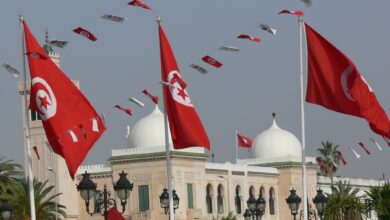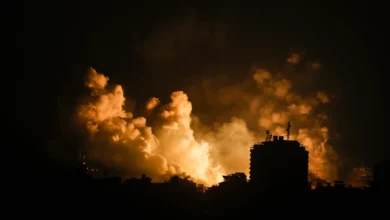Whatever snapped in the Egyptian people last year that released years of built up frustration did not snap on 25 January.
Starting on 14 January, when Tunisia’s fleeing President gave Egyptians reason to believe that it was indeed possible to overthrow a dictator, the transformation of the public from an oppressed people to a revolting one could be detected.
State Fear: “Tunisian President Ben Ali fled the country following protests demanding his ouster.” I ran outside to where my parents were sitting with friends and announced the exhilarating news. As soon as I said the words, one of their friends, who was a high ranking State Security officer, jumped out of his seat, clutched his phone, and in less than a minute he was gone.
Emboldened protesters: The day following Ben Ali’s departure, there were still celebrations in front of the Tunisian Embassy in Cairo. As usual, the Central Security Forces (CSF) cordoned the gathering and wouldn’t let anyone in or out. That’s when an elderly activist started throwing himself at the cordon and tried to break it defiantly.
“You can’t do this anymore, you could do it yesterday but not anymore,” he screamed. “We are men, like the men in Tunisia.” He said it with absolute conviction.
Protests break loose: On 25 January, the first protests to reach Tahrir Square started. At first, they were limited to the stairs of courts and syndicates in Ramses street as they had been for years. But then protesters suddenly started expanding into the street; one of them laid down on the floor in the middle of traffic. A protest stopping traffic wasn’t the everyday event that it has become a year later.
Those who were cordoned off by CSF jumped over a fence to join the others, and the thousands of protesters that were divided on the stairs of different buildings gathered in the middle of the street, making their way to Tahrir Square and inviting those that were watching from inside microbuses and cars to join them.
Overpowering Central Security: Until this day, it was an accepted fact that any confrontation between Central Security Forces and protesters ended with the triumph of the former. But as protesters started to make their way to Tahrir Square, three security forces cordons that tried to stop the marching protest were broken with relative ease. Before breaking the cordons some of the protesters tried reasoning with the Central Security soldiers: “We are doing this for you, you are as oppressed as we are.”
Taking Tahrir Square: As the protest took the turn that leads to Tahrir Square, the square appeared, completely empty except for high ranking police officers with walkie talkies in hand, and a final cordon blocking the entrance to the square from Abdel Moneim Riyad.
The protest paused in front of the cordon for a few minutes. Then, ending the hesitation, a group of no more than 10, mostly women, lurched forward toward the cordon. The others joined and then they were inside Tahrir Square. As they went around the square celebrating, it looked too big for them, until a few hours later when other marches reached the square.
Those suffering quietly speak up: A man in his 50s who looked like the traditional struggling state employee was standing in Tahrir Square in a training suit on 25 January. I asked him why he joined the protests. He started telling me about his struggle to support his family; he talked about the humiliation of having to borrow money from one of his friends every month, and then he collapsed and started crying on the ground half-conscious.
Later that night, I saw a girl standing in the middle of the square. She sobbed quietly and held a sign that read, “Have mercy, I want a job for my brother.”




